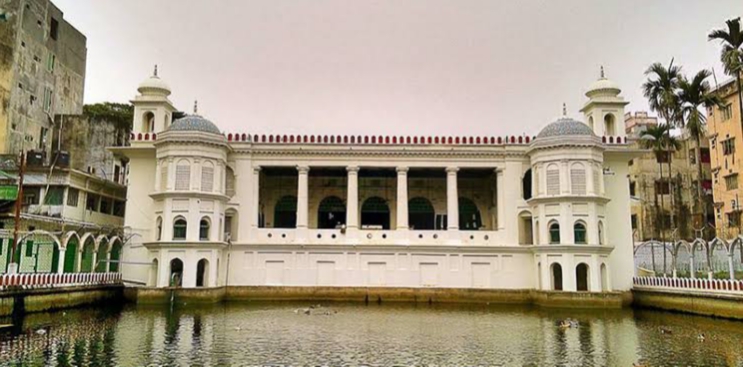
Hosseini Dalan is a historical and religious building in Dhaka’s Old Dhaka, which is of particular importance to the Shia Muslim community. It is essentially an Imambara, or mourning pillar, where Shia Muslims mourn during the month of Muharram in memory of Imam Hussain. Hosseini Dalan holds special status in terms of architecture, history and religious importance. On the one hand it is a spiritual place for the Shia community, on the other hand it is an important part of Dhaka’s cultural heritage.
Establishment and history
Although there is some disagreement about the exact date and founder of the Hosseini Dalan, it is believed to have been established during the Mughal period, around 1642. It was built under the supervision of Shia leader Saad Musa Khan during the Mughal ruler of Dhaka, Shah Shuja.
It was originally built as a place for Shia religious ceremonies. This Imambara was established in the month of Muharram to commemorate the battle of Karbala. The martyrdom of Imam Hussain and his companions in the Battle of Karbala is observed with deep mourning and honoring celebrations among the Shia community.
Architectural style
Hosseini Dalan is an excellent example of Mughal architecture, where a blend of Islamic and Persian architecture can be observed. The main building of the establishment stretches north-south, and has a spacious courtyard in front that provides space for religious ceremonies and mourners.
The main features of the building include a large reservoir or pond, small domes and elaborate windows and doors. Once inside, one can see the Mihrab, Mimbar and other religious monuments, which are decorated with beautiful craftsmanship. Wall paintings, calligraphy and other artistic elements of architecture clearly show the influence of Mughal architecture.
Religious significance
Hosseini Dalan is an integral part of the religious life of the Shia community. The first ten days of the month of Muharram and especially the day of Ashura are celebrated here on a grand scale. On the day of Ashura, the Tazia procession leaves here, where the Shia community mourns the memory of Imam Hussain.
The Tazia procession is a symbolic event commemorating the Battle of Karbala. The participants in the procession tried to understand the pain of martyrdom of Imam Hussain and expressed grief. Besides, Eid-e-Miladunnabi, Chehlam and other Shia religious events are also observed here.
Restoration and preservation
Part of the Hosseini building was damaged in a devastating earthquake in 1897. It was later rebuilt and renovated during the British period. Some modern additions and repairs were made while keeping the original structure of the architecture intact. After the partition of the country in 1947, the Bangladesh government took initiatives to preserve Hosseini Dalan as a historical structure.
As in the past, the Department of Archeology and the local administration take regular initiatives for its maintenance and preservation. The building has undergone renovations at various times, keeping its heritage and architectural beauty intact.
Contemporary usage and cultural influence
Today, Hosseini Dalan is not only a religious place of the Shia community, but it is also a popular tourist spot in Dhaka. Local and foreign tourists come here to get acquainted with Mughal architecture and Shia culture. During the month of Muharram, many visitors come to see the mourning scenes and the Tazia procession.
Also, Hosseini Dalan has become part of Dhaka’s cultural life. It is not only a religious center but also part of the city’s history and heritage. It is an important attraction for local and international tourists, where they can enjoy the history of Dhaka and the beauty of Mughal architecture.
Hosseini Dalan is an ancient and important building in Dhaka, symbolizing the religious and cultural heritage of the Shia Muslim community. Its architectural style, religious importance and historical context have earned it a special place.
Hosseini Dalan is not only the center of religious rituals of the Shia community, but is also a part of Bangladesh’s heritage and culture. Its history is an invaluable part of the cultural heritage not only of the Shia community, but of the entire country. This structure is a living monument of our past which is still associated with religious and social life today. It is a living chapter of history that will serve as a lesson for present and future generations.

 Md. Ibrahim Hossain Bishal
Md. Ibrahim Hossain Bishal 


















